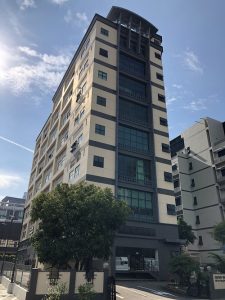– Logistics and e-commerce sector accounted for 44% of occupied warehouse space as tracked by Colliers
– Colliers ranks Changi as the top logistics micro-market in Singapore, ahead of Tuas and Boon Lay/Jurong West micro-markets
– Singapore has one of the highest warehouse space per capita in Asia, with overall vacancy rate remaining elevated
– Continued e-commerce sector growth and a more benign supply pipeline over 2019-2023 should lend support to the logistics property market
Colliers International on Oct 3 launched its latest research Radar report The Future of Logistics Real Estate, which tracks the performance and outlook for the logistics property sector, identifies the top logistics micro-markets in Singapore, and provides recommendations for occupiers, landlords and investors.
Warehouse occupiers in Singapore
Table of Contents
The report noted that third-party logistics (3PL) and logistics companies are the top occupier sector, taking up 44% of occupied warehouse space in Singapore, based on industrial properties track by Colliers Research. 3PL and Logistics sector comprises freight forwards, transport agents, supply chain and logistics support companies, delivery service, storage service, and e-commerce.
Ms Tricia Song, Head of Research for Singapore at Colliers International, said, “Singapore is a top class logistics hub with the world’s busiest transshipment port, second busiest port in terms of total cargo tonnage handled, and the 12th busiest airport by cargo traffic as of 2018.
https://www.icompareloan.com/resources/ultra-high-net-worth-investors/
As such, Singapore has been the location of choice for e-commerce sector players to establish their footprint when entering the region. The emergence of e-commerce in recent years has had a positive spillover to the 3PL and logistics sector in Singapore.”
 Apart from the 3PL and logistics sector, the other warehouse occupiers comprise: the manufacturing sector (which accounted for 30% of occupied warehouse space); distributors (10%); food, chemicals and pharmaceuticals (6%); oil, marine and energy (5%); and IT and technology (5%).
Apart from the 3PL and logistics sector, the other warehouse occupiers comprise: the manufacturing sector (which accounted for 30% of occupied warehouse space); distributors (10%); food, chemicals and pharmaceuticals (6%); oil, marine and energy (5%); and IT and technology (5%).
Colliers Research believes regional trade and growth in e-commerce should channel to stronger warehouse demand in the long term and benefit Singapore given its logistics hub status However, the small market size in Singapore as well as greater efficiencies in inventory forecasting and stock management could potentially moderate the need for drastic warehouse expansion.
Top logistics micro-markets in Singapore
In Singapore, there are about 117 million square feet of total warehouse space in Singapore – of which more than 80% are located in the East and West Regions of Singapore.
After assessing the major logistics micro-markets in Singapore, Colliers Research ranks Changi as the top location for occupiers, followed by Tuas and Boon Lay/Jurong West.
https://www.icompareloan.com/resources/mortgage-broker-singapore-best-rate/
The research team evaluated the logistics micro-markets against four criteria: (i) presence of an existing logistics cluster and supporting infrastructure; (ii) availability of quality warehouse stock with consideration of both existing and future supply, as well as vacancy rate; (iii) accessibility to airport or sea ports; and (iv) rent premium compared to island-wide average.
- Changi stands out as a top location for logistics players owing to its proximity to the Changi Airport. However, there is limited supply of warehouse space and unit sizes are typically smaller than those in the West Region. Due to strong demand, this micro-market has the highest occupancy rate among major logistics locations in Singapore.
- Tuas, in second place, boasts abundant supply of warehouse space amid double-digit vacancy rate. This location can offer new warehouse stock, typically with large unit sizes, big ramps, and high ceilings. Tuas would also be home to the world’s largest container terminal in a single location when the new mega port becomes fully operational in the 2040s.
- Boon Lay/Jurong West, which is ranked third, is located amidst the matured industrial and manufacturing area from Tuas and Pioneer to Jurong East. It has an abundance of space, especially in Boon Lay where vacancy rate is currently at 10.5%. This location is supported by the upcoming Jurong Innovation District and the future Jurong Regional Line. However, the overall warehouse stock in Boon Lay are relatively older than those in Tuas.
Dominic Peters, Senior Director of Industrial Services at Colliers International, said, “We believe it is timely for tenants to review their lease and space requirements, and explore options. They can consider locating further away from the city centre to enjoy rental savings or opt for customised and build-to-suit warehouse facilities which would offer greater rental certainty. Meanwhile, landlords should continuously enhance and upgrade assets to adopt innovative and eco-smart systems in preparation for the new wave of industrial revolution, Industry 4.0.”
https://www.icompareloan.com/resources/what-is-sibor-and-sor/
Rents on decline for five years; e-commerce sector growth and benign supply pipeline should support rents and occupancies
JTC rental index showed that island-wide warehouse rent has been on a downward trend for more than five years, with Q2 2019 rental index declining by 19.4% from its peak in Q4 2013. This is possibly due to the influx of new supply averaging 6.3 million sq feet (equivalent to 7.6% of total warehouse stock) per year during the 2014-2018 period, bringing total warehouse stock to 117 million sqft as of Q2 2019.
Against a small population of 5.7 million, Singapore has one of the highest warehouse space in Asia at 20 sq feet per capita, but lower than its developed peers – US and Japan. However, Colliers Research does not think there is a sustained oversupply of warehouse stock as Singapore’s logistics hub status should benefit from both domestic and regional growth in e-commerce sector. In addition, it expects warehouse supply to ease, with annual expansion averaging 1.5% of warehouse total stock over 2019-2023.
Ms. Song added, “We forecast logistics rents to remain weak on the deterioration in global trade and the potential economic slowdown in the near-term. However, there are potentially some upside ahead, particularly from the rising e-commerce and logistics sector. In addition, with a more benign warehouse supply pipeline, we expect occupancies and rentals to improve from 2022 onwards.”






